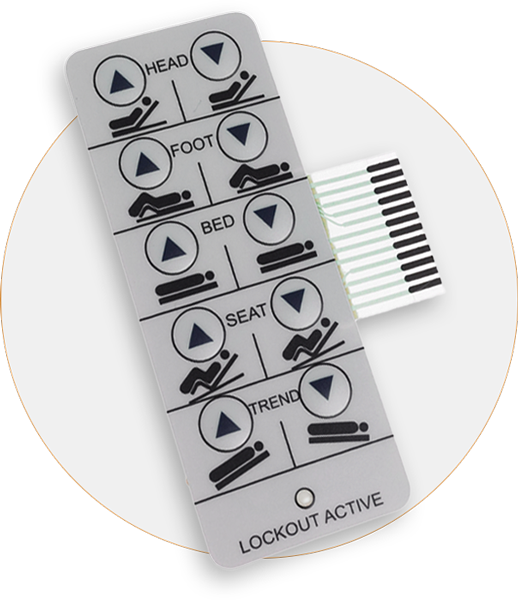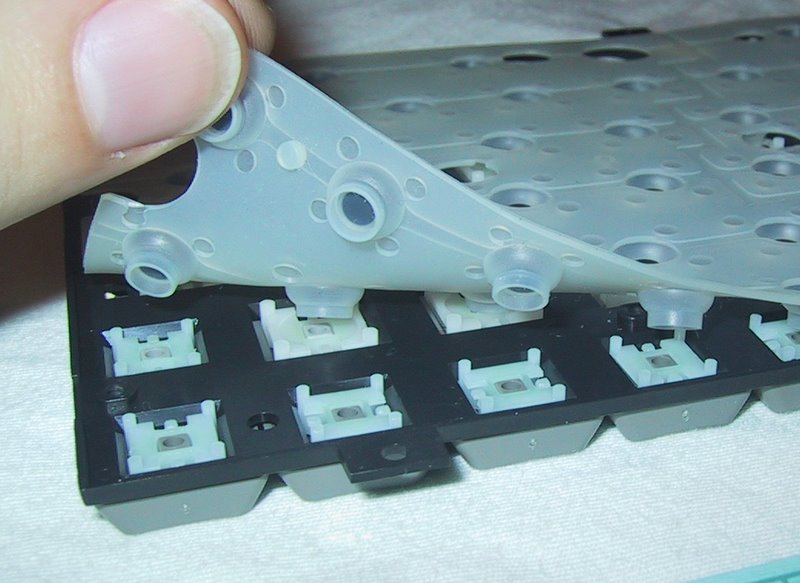All Regarding Membrane Layer Switch: Comprehending Its Design and Performance
When you believe regarding the control user interfaces in modern devices, membrane switches frequently come to mind. Allow's explore what sets membrane switches over apart from various other control systems.
What Are Membrane Layer Buttons?

Membrane layer switches can also be personalized concerning form, dimension, and graphics, enabling producers to develop special interfaces customized to certain items. In general, membrane layer buttons play a substantial role in enhancing individual experience throughout a vast variety of applications.
How Membrane Layer Switches Over Job
When you push a secret on a membrane layer button, it turns on a straightforward yet effective device. The leading layer, usually made of flexible product, presses down onto a conductive layer beneath it. This action bridges the gap in between conductive traces, completing an electric circuit. As quickly as the circuit shuts, it sends a signal to the gadget's controller, which interprets your input.
You'll see that the responsive comments differs based upon the button design, providing either a soft click or a more obvious reaction. When you release the trick, the membrane layer go back to its initial placement, resuming the circuit and quiting the signal. This procedure takes place almost instantaneously, making sure a responsive individual experience.
Membrane switches are popular due to their durability and resistance to dirt and dampness, making them suitable for different applications, from family devices to clinical tools. Recognizing this operation assists you appreciate their extensive usage.
Key Components of Membrane Switches
Understanding the crucial components of membrane layer buttons is fundamental for understanding their functionality and layout. At the core, you'll find the visuals overlay, which offers the aesthetic user interface for customers. Underneath that, there's a spacer layer that divides the circuit layers, making sure that they don't make contact until pushed. The circuit layer is where the magic happens; it consists of conductive traces that finish the circuit when you push the button. One more vital aspect is the sticky support, enabling the switch to comply with surface areas securely. The protective layer guards versus ecological elements and put on, expanding the button's life expectancy. Each part plays a considerable role in making certain trusted efficiency and user communication. By comprehending these components, you'll get understanding into how membrane layer switches operate and their value in numerous applications.
Materials Utilized in Membrane Change Layout
The performance and durability of membrane switches over heavily depend upon the materials used in their layout. You typically run into polyester and polycarbonate as key substrates because of their excellent stamina and flexibility. These materials withstand scrapes and chemicals, making them perfect for requiring environments.
The conductive layers commonly use silver or carbon, picked for their reliability and conductivity. membrane switch manufacturer. Silver gives exceptional performance, while carbon is a cost-efficient choice. For the overlay, you might think about a matte or glossy coating, depending on your visual demands and customer experience
Make certain to pick adhesives that hold up against environmental variables like temperature and moisture. Picking the right materials will ensure your membrane button stands the examination of time.
Style Factors To Consider for Membrane Buttons
While developing membrane switches, it's essential to take into account different factors that influence their capability and customer experience. Begin by focusing on the format and button size; make specific they're intuitive and easy to navigate.
Don't neglect the visuals layout; clear labeling and color contrast are considerable for presence. Validate your style pop over to this web-site accommodates environmental aspects, like wetness or temperature level variations, which could influence performance. Remember the importance of testing prototypes with actual users to gather responses and make required modifications. This iterative procedure helps you fine-tune the design, verifying it satisfies both useful and aesthetic needs successfully. By carefully thinking about these elements, you'll produce a membrane button that enhances usability and complete satisfaction.
Applications of Membrane Buttons
Membrane switches are functional elements discovered in different applications, from industrial tools to consumer electronic devices. You'll see their impact in machines that require sturdy user interfaces and in gadgets that take advantage of streamlined designs. Recognizing these applications helps you appreciate the capability and functionality of membrane layer switches in daily innovation.
Industrial Equipment Use
When you're looking to boost the functionality of commercial devices, membrane switches use a reputable remedy that combines durability with straightforward design. These switches are ideal for extreme settings, supplying resistance to my company dust, wetness, and chemicals. Accept membrane layer buttons to enhance your operations and enhance total performance.
Customer Electronic Devices Integration
In the domain name of consumer electronic devices, membrane switches play a vital role in enhancing individual interaction and device capability. Membrane layer switches additionally ensure toughness and resistance to dirt and dampness, extending the lifespan of your electronic devices. By choosing membrane layer buttons, you boost not just the capability however likewise the style of your gadgets, making day-to-day communications smooth and pleasurable.
Benefits and Downsides of Membrane Switches
While membrane buttons use a variety of benefits, they also come with some drawbacks that you need to think about. One significant benefit is their portable design, making them optimal for space-constrained applications.

Nevertheless, there are drawbacks. Membrane layer buttons can have a much shorter lifespan contrasted to mechanical switches, particularly under hefty use. They can likewise be less tactile, which may impact customer feedback during operation. If harmed, fixing them can be difficult and frequently needs total substitute. Eventually, their sensitivity to extreme temperature levels and ecological click this link conditions may limit their efficiency in particular settings. Balancing these benefits and drawbacks will certainly assist you establish if membrane layer buttons are the ideal suitable for your project.
Frequently Asked Concerns
How Long Do Membrane Switches Typically Last?
Membrane layer switches commonly last in between 5 to ten years, depending on usage and environmental conditions. You'll desire to review variables like wear, direct exposure to moisture, and temperature fluctuations to gauge their durability effectively.
Can Membrane Switches Over Be Personalized for Certain Styles?
Yes, you can personalize membrane layer buttons to fit particular styles (membrane switch manufacturer). You'll have the liberty to select colors, forms, and designs that match your task's demands, ensuring they mix flawlessly with your overall visual
What Is the Price Variety for Membrane Switch Manufacturing?
The expense array for membrane layer switch production usually drops between $1 and $10 each, depending upon factors like layout complexity, amount, and materials. You can get quotes from manufacturers to discover the most effective alternative.

Are Membrane Layer Switches Over Water Resistant or Immune?
Membrane switches can be made to be water-proof or resistant, depending upon materials made use of and building approaches. If you need them for wet settings, assure you define those demands during the layout procedure.
Exactly How Do Membrane Switches Over Compare to Conventional Buttons?
Membrane layer buttons are usually thinner and much more adaptable than standard switches, offering a sleek style. They're often easier to cleanse and incorporate, however could not give the tactile feedback you're used to with mechanical alternatives.
Final thought
